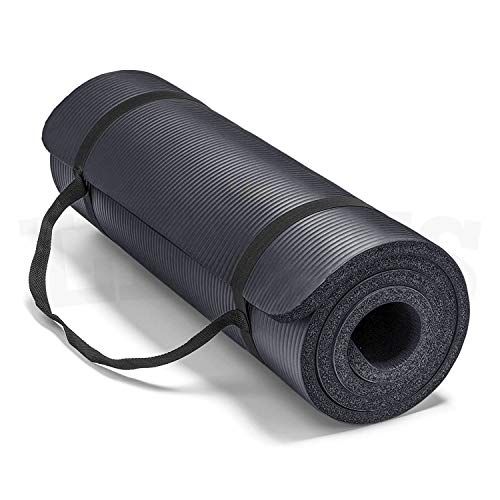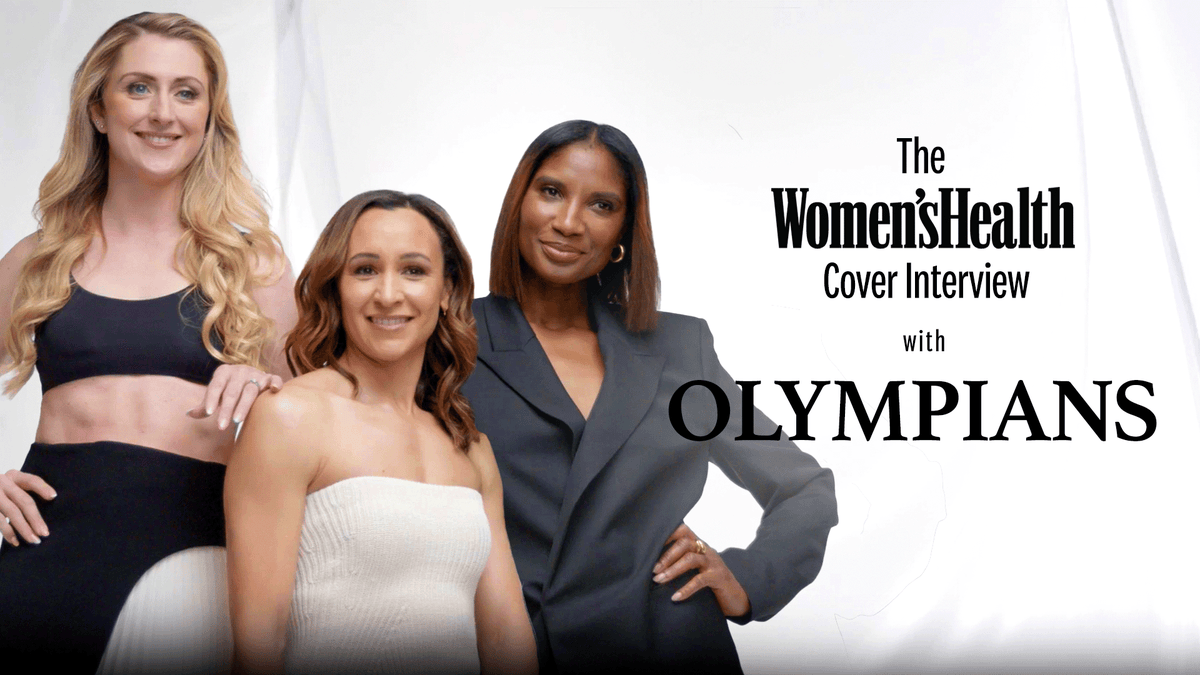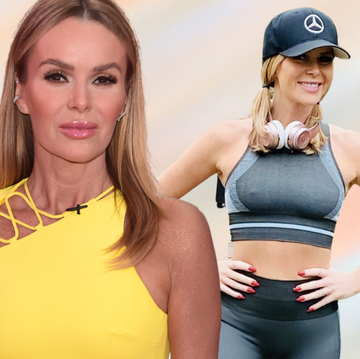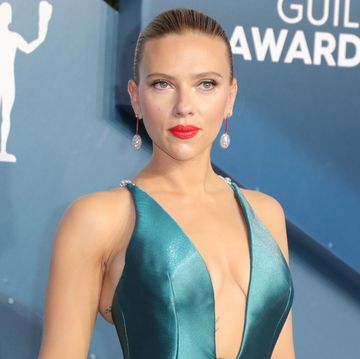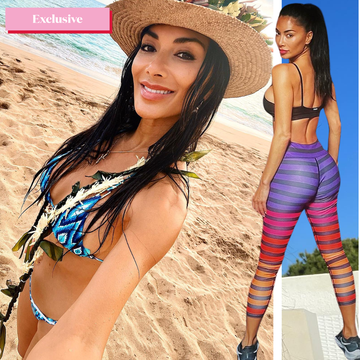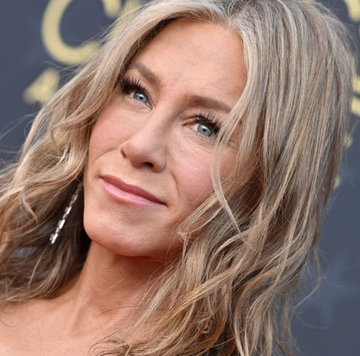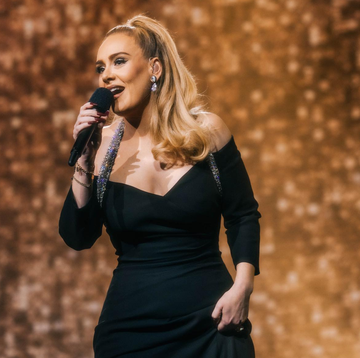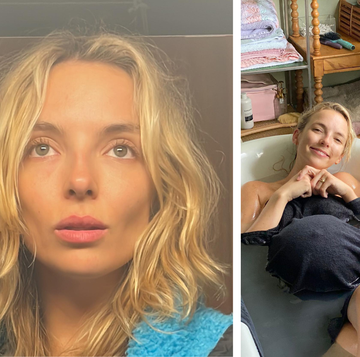Blake Lively showed up at the Deadpool & Wolverine premiere on Tuesday (July 22) to support Ryan Reynolds rocking a casual skintight catsuit. Ryan reacted with a literal gasp, and we can't get over how fit she looks either, TBH. Luckily for you, we've got the intel on exactly how she trains.
After hitting up the PTs of Alexandra Daddario, Victoria Beckham, J Lo, Khloe Kardashian, Jessica Alba, Dua Lipa, Chrishell Stause, Lily James, Anne Hathaway and Tess Daly for their workout routines, last year, I got in touch with Blake Lively’s main man Don Saladino who offered me my very own training session.
Turns out, everything Blake and Don do is surprisingly simple. Here's everything he taught me.
My workout
Since Don’s based in NYC, we caught up over Zoom. His first question: how are you feeling? On this particular day, I was veritably whacked after three consecutive workout days, so Don advised that we tackle an ‘active recovery’ no-equipment 40-minute bodyweight workout – I’ll come onto this in more detail below, but here’s a complete breakdown.
Warm-up:
- Neck circles x5
- Head tilts x5
- Chin to chest tilts and head to ceiling tilts x5
- Side reach x5
- Hip circles x 5
- Single-leg leg circles x5 (clockwise and anti-clockwise)
- Single-leg deadlifts x10
- Lateral lunges x10
- Shoulder T-lifts x10
- Shoulder Y-lifts x10
- Shoulder W-lifts x10
Bodyweight workout:
- Split squats x10
- Push-ups x10
- Supine handcuffs x10
- Repeat twice through
- Reverse crunches x10
- Side plank, knee to elbow crunches x10
- Plank shoulder taps x10
- Repeat twice through
Cool-down
- Front lunge hip flexor stretch, 30 secs each side
- 90-90 hip stretch, 30 secs
Now to get into the nitty gritty of it. Here’s everything I learnt from Don’s approach, that you (and I) could definitely use within our own routines.
1. Use food to help you feel better (and achieve any goals)
Don swears by the Lumen tool. ‘I train the metabolism of all of my clients,’ he explains. ‘The Lumen indicates the type of fuel the body is using to produce energy – fats or carbs. Using this, clients can then adapt what they eat on each day, in order to improve their “metabolic flexibility”, and therefore how well they perform in each workout.’ This is particularly effective for clients with a fat loss goal, so says Don.
I set my Lumen up post-workout with Don, and upon blowing into the device (it’s as easy as that), it showed a higher carbon dioxide concentration, meaning I was in carb-burning mode and so eating more of them would help me recover as my body was using them for energy. I made myself peanut butter and banana on sourdough toast and I can attest that I didn’t crash mid-afternoon, like I usually would after a workout. In contrast, if I’d eaten a high-fat, low-carb meal, my body wouldn’t have recovered as well, since it wasn’t in fat-burning mode and so the fat I’d consume wouldn’t have been as useful. Capiche?
2. Figure out how ‘ready’ you are for a workout, and decipher whether you’re tired or burnt out
‘I always ask my clients for their temperature,’ Don explains. ‘It gives me an idea of how they’re feeling that day, and so how hard we should go in the workout.’ As mentioned, we opted for a lighter, bodyweight workout for me, but my question for Don was how to know whether you’re just tired, or if you’re burnt out and should avoid working out altogether. He cites a few factors to consider:
- How are you feeling?
- Are you stressed out?
- Are you working a lot?
- How is your sleep?
‘These are all indicators to your readiness for exercise,’ he explains. ‘Exercise can add stress and mess with your mood.’ So, if you’re feeling considerably more stressed than normal, if work is extra busy, or your sleep has been suffering, that’s probably your sign to go easy.
3. Think about your goals – if you have one
As much as it’s good to have a goal, there’s no harm in exercising purely for the fun of it. For me, my goal when working out with Don was to recover from the previous few days of crushing it in the gym, and an active recovery approach was Don’s solution. Why?
‘By keeping the heart rate slightly elevated and moving in a multi directional way, using all of the planes of the body – the sagittal, transverse and frontal, the amount of lactic acid (the stuff that builds up in your body during exercise and causes sore muscles and DOMS) will reduce, so it’ll help your muscles to repair.’
Several studies have proven this to be true, including this one which compared active and passive recovery in downhill skiiers and found that those who did active recovery had less lactic acid, and could move faster and complete more runs.
Don adapts his workouts according to each and every client and their individual goals, whether it be fat loss, weight loss, muscle growth or otherwise.
Check out our complete guide on how to build muscle, specifically for women.
4. Incorporate active recovery days to boost energy levels
While complete rest days are a no-brainer for recovery and progress, active recovery on days when you feel slightly lethargic but still want to get moving can work wonders for your energy levels. My Lumen insights and eating informatively certainly helped, but even before I made myself a meal, I felt nowhere near as exhausted as I usually do after exercising.
It’s common sense that this was because we didn’t go as hard, but rather than just not feeling completely worn out, I felt like I actually had more energy than before I’d started. ‘You don’t release endorphins when you’re at complete rest,’ Don tells me. ‘Getting moving slowly means you’ll produce these and get the energetic, happy feeling they give you, without the rush of cortisol (the stress hormone) that you may get from high intensity exercise, which could leave you feeling fatigued.’
Studies show that this also comes down to the role of active recovery in maintaining a pH balance in your body. Enzymes responsible for energy (glycolytic enzymes) are pH dependent, meaning that they can only be utilised if pH levels are stabilised, and active recovery workouts ensure that this happens by ridding your muscles of lactic acid.
5. Make active recovery days dynamic
My typical active recovery day would involve a 40-60 minute walk, but Don says doing something more dynamic could be beneficial. It’s about the plane of movement you do. ‘Walking is very linear – you do it in a straight line,’ he explains. ‘But by covering all planes you’re less likely to develop weak points. If you were to run in a straight line all the time, for example, you’d need to practice more lateral (sideway) movements.’ So, by covering every direction of movement in the workout Don and I smashed out, I was training every muscle in my body which would help to reduce any potential strength imbalances.
6. Plan your workout splits for you
Workout splits – dedicating a single day to a single muscle group – are a popular approach with plenty of trainers since it means each muscle group is able to recover before they’re put to work again. What was interesting for me was that Don prescribed me a full body workout.
His reasoning is refreshing (and something we can apply to pretty much everything in the world of fitness): there’s no right or wrong. ‘If you don’t tend to suffer from DOMS, a full body workout is sometimes more beneficial. It depends on your goal and your fitness level as an individual. I’d advise exploring the different approaches and seeing what works for you – it should be fun, and a full body approach might be what you prefer.’
Blake Lively’s training routine
Don gave me some more insight into Blake’s standard training MO, but before we go any further, know that while Don employs the same fitness principles, Blake’s routine is unique to her and her only. Likewise, what Don prescribed me, and what he’d advise for you, is unlikely to be the same. But for anyone intrigued, here’s a snapshot of a workout for Blake.
- Child’s pose x5 breaths
- 90-90 hip stretch x30 secs
- Hip flexor stretch x20 secs
- Cat/cow pose x10
- Hip airplanes x5
- Push-ups x5-8
- Broad jumps x5
- Farmer carries x50 steps
- Rest x1 min
- Repeat twice through
- Dumbbell deadlift x8
- Flat dumbbell chest press x8
- Rest x1 min
- Repeat four times through
- Goblet squat x8
- Bent-over dumbbell row x8
- Rest x1 min
- Repeat four times through
On average, Don says he trains with his clients around three-six times a week, for an hour per session. The timings depend on the lifestyle of his clients – ‘Blake’s a mum and a businessperson, so we get as much training in as we can, depending on her schedule,’ he says. It comes down to what we always say – find a realistic workout routine that you can feasibly sustain. Consistency is key.
Related stories:
- Blake Lively’s Fitness Routine is Refreshingly Simple – Her PT Breaks Down How He Gets Results
- Blake Lively's Body Is Next Level Strong—Here's A Workout From Her PT That Could Help You Get There
As Women’s Health UK’s fitness director (and a qualified yoga teacher), Bridie Wilkins has been passionately reporting on exercise, health and nutrition since the start of her decade-long career in journalism. She secured her first role at Look Magazine, where her obsession with fitness began and she launched the magazine’s health and fitness column, Look Fit, before going on to become Health and Fitness writer at HELLO!. Since, she has written for Stylist, Glamour, Cosmopolitan, Marie Claire, Elle, The Metro, Runner’s World and Red.
Now, she oversees all fitness content across womenshealthmag.com.uk and the print magazine, spearheading leading cross-platform franchises, such as ‘Fit At Any Age’, where we showcase the women proving that age is no barrier to exercise. She has also represented the brand on BBC Radio London, plus various podcasts and Substacks – all with the aim to encourage more women to exercise and show them how.
Outside of work, find her trying the latest Pilates studio, testing her VO2 max for fun (TY, Oura), or posting workouts on Instagram.



